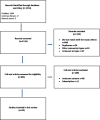The role of oxidative stress in patients with recurrent pregnancy loss: a review
- PMID: 34656123
- PMCID: PMC8520213
- DOI: 10.1186/s12978-021-01257-x
The role of oxidative stress in patients with recurrent pregnancy loss: a review
Abstract
Background: Recurrent pregnancy loss (RPL) presents one of the main problems in the field of reproductive medicine, due to the unknown etiology in 50% of cases, as well as limited evidence-based diagnostic and therapeutic modalities. Recent studies indicate that systemic and placental oxidative stress (OS) represents an essential factor in the etiopathogenesis of RPL. This article is a comprehensive narrative synthesis of previously published studies concerning the role of oxidative stress in the etiology of recurrent pregnancy loss.
Methods: We conducted literature search of published studies in the English language focusing on oxidative stress and its association with recurrent pregnancy loss (RPL) utilizing the Medline and Cochrane databases from 2000 through January 2021. The keywords used were "recurrent pregnancy loss" "oxidative stress and recurrent pregnancy loss" and "oxidative stress biomarkers and recurrent pregnancy loss".
Results: The search yielded 1116 publications, of which 92 were included in the final analysis. Reactive oxygen species (ROS) and reactive nitrogen species (RNS) at basal levels have various physiological functions whereas deviation from redox window is associated with different pathologies including early pregnancy loss. The currently available studies support the concept that increased oxidative stress (OS) and deficient antioxidant protection is implicated in the etiology of recurrent pregnancy loss (RPL) but underlying mechanisms through which OS affects pregnancy outcome remains largely indefinable.
Conclusions: Future research in this field can provide new insights regarding the OS-mediated damage in recurrent pregnancy loss as well as potential applications of antioxidant therapy in this group of patients.
Keywords: Oxidative stress; Oxidative stress biomarkers; Recurrent pregnancy loss.
Plain language summary
Recurrent pregnancy loss is a significant health problem in reproductive medicine due to the idiopathic etiology in 50% of cases and limited evidence-based practice. The role of oxidative stress in recurrent pregnancy loss (RPL) is an understudied and enthralling field of investigation. We reviewed the existing information based on the published literature on this complex topic and found that oxidative/nitrosative stress complemented with inefficient antioxidant capacity presents an essential factor in the etiology of recurrent pregnancy loss (RPL). However, based on the currently available knowledge underlying mechanisms through which OS-imbalance affects the increased risk of RPL remains unclear. Future research with a larger number of patients, can provide new insights regarding the molecular mechanisms as well as modifiable factors to decrease OS in this clinical entity.
© 2021. The Author(s).
Conflict of interest statement
None of the authors have any conflict of interests.
Figures
References
-
- Zidi-Jrah I, Hajlaoui A, Mougou-Zerelli S, Kammoun M, Meniaoui I, Sallem A, et al. Relationship between sperm aneuploidy, sperm DNA integrity, chromatin packaging, traditional semen parameters, and recurrent pregnancy loss. Fertil Steril. 2016;105(1):58–64. doi: 10.1016/j.fertnstert.2015.09.041. - DOI - PubMed
Publication types
MeSH terms
Substances
LinkOut - more resources
Full Text Sources


